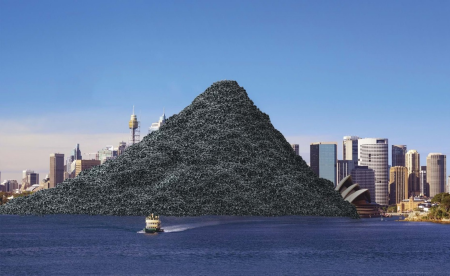Chief Investigators: Professor Julie Mills, Professor Yan Zhuge, Associate Professor Xing Ma, Professor BIll Skinner
Project duration: 2016 - 2020
Problem
In Australia in 2013–14, 51 million equivalent passenger units (EPUs) of end-of-life tyres were produced, but only 5% were recycled domestically. Of the rest, 32% were exported, 16% were disposed of in licensed landfills, and the fate of the remaining 47% was either unknown or unverified disposal in landfill on mining sites. The tyre industry is keen to develop a market for recycled tyre products. At the same time, supplies of natural sands that have the necessary consistency and chemical properties for use as fine aggregate in concrete (usually beach and river sands) are becoming depleted worldwide, including in Australia.
Project Summary including how the problem was solved
With our partners, RMIT University, Tyre Stewardship Australia, FMG Engineering, TyreCycle, ResourceCo and Ancon Beton, we determined the optimal use of crumb rubber produced from end-of-life tyres as a partial replacement for natural sand aggregate in concrete, creating a new product known as crumb rubber concrete (CRC).
We focused on the use of CRC in residential construction applications, since residential footings and slabs generally do not require high-strength concrete, and account for approximately 40% of all premix concrete consumption in Australia. Specifically, we aimed to:
- develop cost-efficient CRC mixes that provide consistent material mechanical properties
- characterise the raw material properties of crumb rubber and its interaction with the concrete matrix to inform the optimal enhancement of the concrete product properties
- determine the composite behaviour of CRC reinforced with steel in terms of constructability, bond strength, durability, and flexural strength to enable its use in reinforced concrete for residential construction
- demonstrate that reinforced CRC is a commercially viable and practical product for the residential construction market, in terms of composition, material treatment, and the economics of production.
Impact
We demonstrated that reinforced CRC is an economically viable and sustainable alternative to conventional reinforced concrete for residential structural engineering applications. The outcomes provide the tyre industry with a viable market for end-of-life tyres, and the premix concrete industry with a green product for the residential construction market.
With funding from Tyre Stewardship Australia, we were able to test whether reinforced crumb rubber concrete is an economically viable and sustainable alternative to conventional reinforced concrete for residential structural engineering applications. The application of reinforced CRC in residential construction has great potential to reduce the environmental impacts of both waste tyres and exploitation of natural material resources.

Image used with permission from: https://www.tyrestewardship.org.au/




